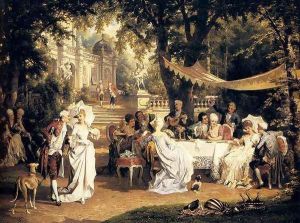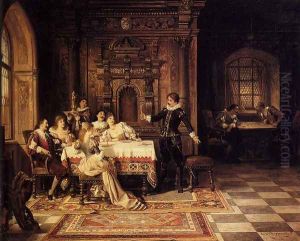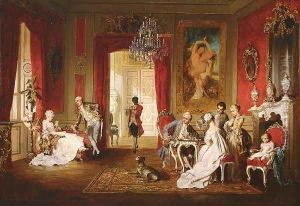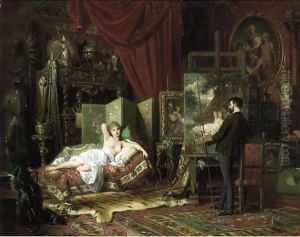Karl Schweninger, Jr. Paintings
Karl Schweninger Jr. was an Austrian painter born on July 7, 1854, in Vienna. He was the son of the composer Karl Schweninger, who was well-known for his collaborations with Franz Liszt. Schweninger Jr.'s artistic inclinations, however, led him toward the visual arts rather than music. He studied at the Academy of Fine Arts Vienna, which was a leading institution in Europe for art education at the time. His education would have provided him with a strong foundation in the academic art traditions of the 19th century, emphasizing technical skill, classical compositions, and historical subject matter.
Throughout his career, Schweninger Jr. was known for his genre paintings, landscapes, and portraits. His style was influenced by the prevailing romantic and classical tendencies of the time, often imbued with a sense of sentimentality and nostalgia for an idealized past. He was particularly adept at capturing the nuances of light and atmosphere, which added a lyrical quality to his work.
Schweninger Jr. exhibited his work in various venues, including the Vienna Künstlerhaus, contributing to the lively art scene in Vienna towards the end of the 19th century. Vienna at this time was a hub for cultural and intellectual activity, and while Schweninger Jr. may not have been at the forefront of the avant-garde movements that would later emerge from the city, his work was representative of the era's more conservative artistic tastes.
Despite his contributions to the art world during his lifetime, Karl Schweninger Jr.'s work has not maintained a high profile in the history of art. His death in Vienna on January 17, 1903, marked the end of a career that, while perhaps not revolutionary, reflected the skills and sensibilities of a competent artist of his time. Today, his paintings can be found in private collections and occasionally appear at art auctions, offering glimpses into the 19th-century Viennese art world.



